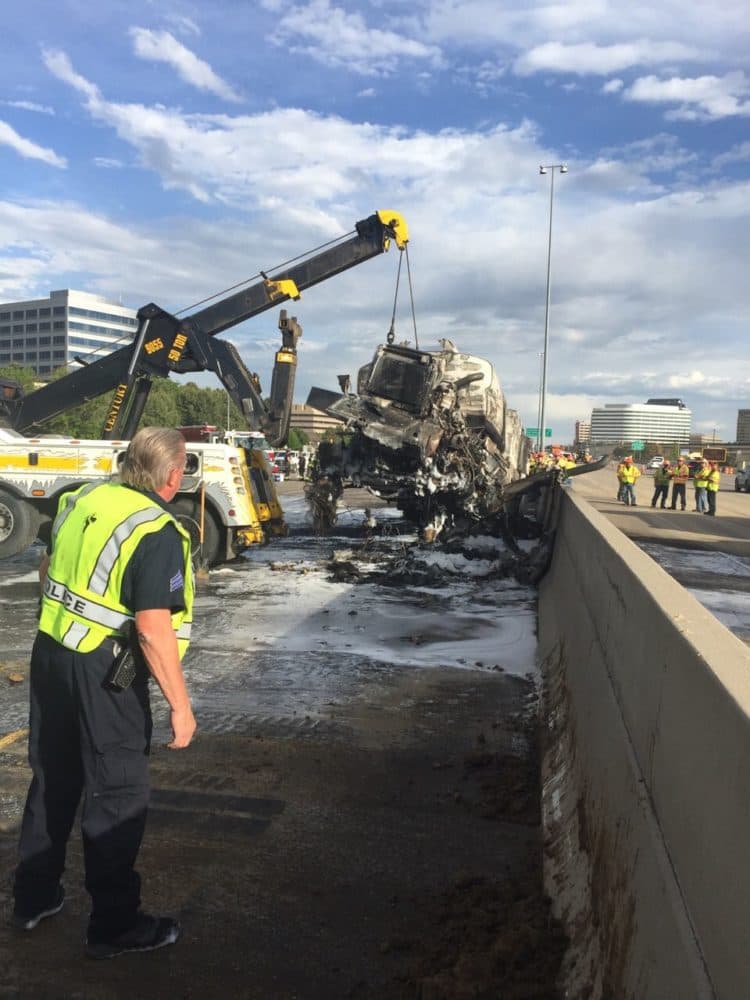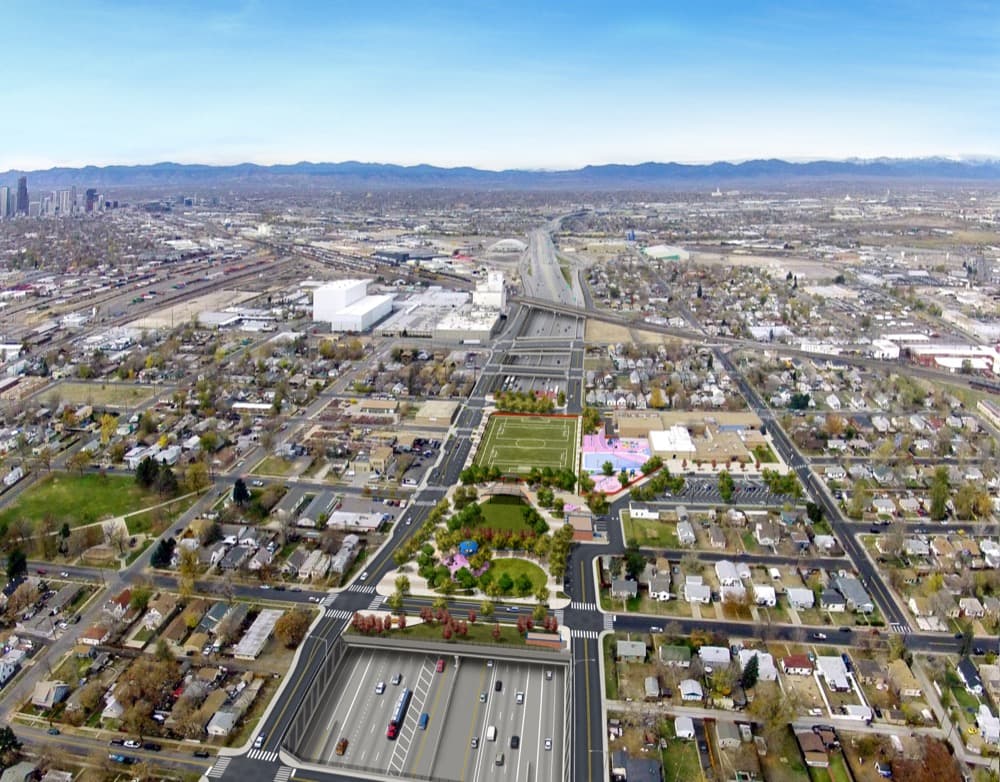
What if this happened under the I-70 cap?
I saw this question on social media as a fuel tanker burned for hours on I-25 and then again when a truck on fire closed I-70.
The I-70 cap is the cover that CDOT plans to build over the sunken, expanded highway that will replace the crumbling viaduct that carries I-70 through northeast Denver. The cover will run from Columbine to Clayton streets, past Swansea Elementary School, and shield those portions of the neighborhood from the wide expanse of the highway.
Opponents of the project see the cover as a scrap tossed to a community that will be damaged by the I-70 expansion, and they're deeply skeptical of CDOT's claims that the cover will be a true amenity for the neighborhood or that it will mitigate the impact of pollution.
So the question "What if this happened under the I-70 cap?" is both entirely legitimate and fueled by broader concerns about the project.
CDOT officials say they have, in fact, thought about it.
First of all, hazardous materials are not allowed on I-70 through town. Trucks carrying hazmat are supposed to take I-270 or I-225 around Denver. The I-25 fire burned so hot for so long because the truck that crashed was carrying fuel. That shouldn't happen on I-70 under the cover because nothing that flammable should ever be there in the first place.
But fires still happen, of course. Designs for the highway call for the installation of a fixed fire suppression system inside the tunnel that will be created by the cover. That's basically a sprinkler system designed for road tunnels and other underground structures. Using a federal grant, CDOT installed one in the Eisenhower Tunnel in 2015 at a cost of $20 million. There are about two to three vehicle fires a year in the tunnel, according to CDOT. There's a firefighting crew stationed near the tunnel, and no one has ever died in a fire there. However, the department wanted extra protection and to avoid the risk of expensive damage to the tunnel.
Installing a fire suppression system as part of new construction will be closer to $5 million. It's a required element of the project in the request for proposals that CDOT issued this year.
"We think it's best for public safety, and it's easier to put it in now than to retrofit it. And we don't want to have damage to the structure," said Keith Stefanik, deputy director and lead engineer on the I-70 expansion.
The National Fire Protection Association's code for road tunnels and bridges calls for these fire suppression systems. Writing in Fire Protection Engineering, Andreas Haggskvist argues that the research supports the benefits of fixed fire suppression systems, even though not everyone involved in road design likes them. The main concerns are that hitting a fire with water in an enclosed space like a tunnel could fill it with steam that could injure other people or affect visibility in dangerous ways. Sprinkler systems also might not do much for fires that start under the hood or inside a cab. However, tests have shown that fire suppression systems reduce heat and smoke from fires and bind with particles in ways that reduce the toxicity of smoke from vehicle fires. These systems can also stop fires from spreading to other vehicles.
Denver Fire isn't actually requiring CDOT to install this suppression system. The department believes it has the resources to respond quickly to any fire on the highway. Nonetheless, Stefanik said CDOT believes it's in the best interest of public safety to have one.

The system includes heat sensors and video detection that would trigger the sprinklers if there are signs of a fire. It will be designed to suppress a fire in the tunnel for up to 30 minutes so that firefighters have time to respond. When the sprinklers go off, they'll also trigger valves that will fill up dry standpipes so that Denver Fire can hook up to a water source and jet fans that will blow smoke out of passageways and portals. The goal is to "maintain an attainable environment" so that people aren't overcome by the smoke.
The system also connects to an automated traffic management system that turns on stoplights and lane use signals to keep arriving vehicles from entering the tunnel from either direction once a fire starts.
"We don't want people to get caught in there, and if people need to get out, they won't get hit by other traffic," Stefanik said.
Gabe Clark, chief fire engineer with Denver Fire, has been working with CDOT on emergency response in the tunnel for several years. This will be the longest tunnel in Denver by a pretty wide margin, but Clark said he's very comfortable with the measures CDOT is taking to prepare for fires under the cap.
Before the tunnel opens to the public, Denver Fire and CDOT will hold joint training exercises to practice responding to fires in this environment. Denver Fire officials said many of the safety features and firefighting techniques are similar to those in high rises, just horizontal instead of vertical.
"This will probably be the safest tunnel we have," Clark said. "When it's done, it will be a very modern and safe structure."
This story has been updated to include comment from Denver Fire.












